Please click here to access the main AHDB website and other sectors.
- Home
- Knowledge library
- Minimising re-entry of pathogens, pests and weeds onto ornamentals nurseries
Minimising re-entry of pathogens, pests and weeds onto ornamentals nurseries
Preventing or delaying re-entry of pathogens, pests and weeds avoids outbreaks and associated financial losses while reducing the need for chemical control inputs.
Back to: Guidelines on nursery hygiene for outdoor and protected ornamental crops
Inspection of incoming plant material
Check the leaves and roots from a selection of plants in all batches of incoming material for diseases, pests and damage symptoms. Pay particular attention to imported plants and cuttings and to host plants of certain pests and diseases.
Inform the supplier immediately if a disease or pest is found. Depending on the nature of the problem and the severity of the issue, dispose of the plants, or treat them with a suitable biological control agent or plant protection product.
Where possible, maintain a growing environment unfavourable to any disease found. If a pest or pathogen is present and the plants are accepted, and control measures are taken, quarantine and regularly monitor affected plants to ensure the problem is well controlled.
If a disease or pest is known or suspected to be a non-indigenous quarantine organism, APHA should be informed immediately.
Routine monitoring
After potting, crops should be monitored for pests, disease symptoms and weeds. Select and examine plants from several high-risk positions in the crop, including:
- Still or sheltered areas
- Areas next to heating pipes and stanchions
- Low spots prone to flooding
- Areas close to doorways
- Under vents in glasshouses
Monitor and record:
- Stunted or discoloured growth
- Atypical growth such as leaf, petal or flower distortion that may be due to either direct pest damage or virus infection
- Leaf spots, yellowing or necrosis
- Signs of fungal growth or sporulation
- Root rots and plant wilting
- Stem base constriction or browning
- Presence of pests such as aphid, caterpillar, leaf miner, thrips, two-spotted spider mite, whitefly, etc.
- Pest damage symptoms including sticky honeydew from sap-sucking pests, leaf flecking or silvering to leaves as a result of thrips or mite feeding or leaf holing/notching resulting from caterpillar or vine weevil feeding, etc.
After finding a disease or pest, the plants should be treated or removed from the growing area as soon as possible. For certain pests like leaf miners, removing individual symptomatic leaves can delay infestation before biological or chemical control measures are put in place. Early detection can reduce the plant-to-plant spread and minimise losses. In the case of weeds, remove them from container-grown crops by hand before they flower and set seed. Such weeds can also harbour pests and diseases that may impact the crop.
Mature weeds within crops will flower and set seed and potentially harbour pests and diseases
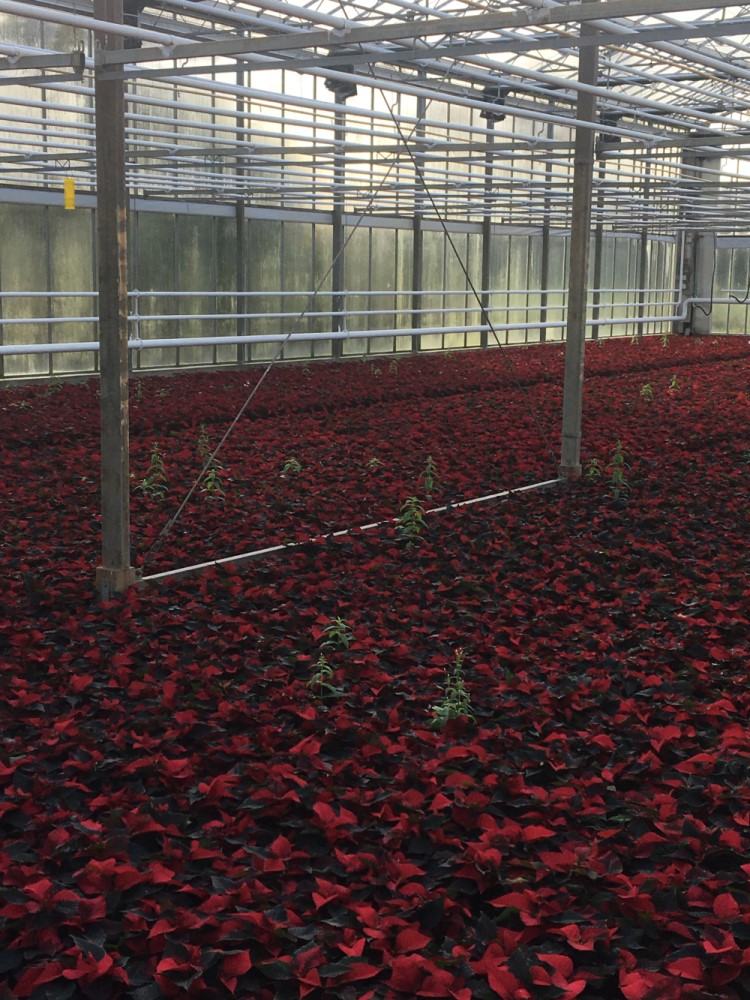
Image © AHDB
Position fresh sticky traps in the glasshouse or polythene tunnel to help monitor levels of pest activity. Check the traps weekly and keep records of selected pests found and their levels:
- Yellow traps catch most flying insects and are best for monitoring whitefly, leaf miner and sciarid fly
- Blue traps are generally more attractive to western flower thrips (WFT)
Research and development into imaging technologies using the electromagnetic spectrum outside of visible light to detect pathogen infection before visible symptom development is underway. This and other camera and automation technologies will complement and enhance routine pest and disease monitoring of crops.
Sticky traps over a growing crop
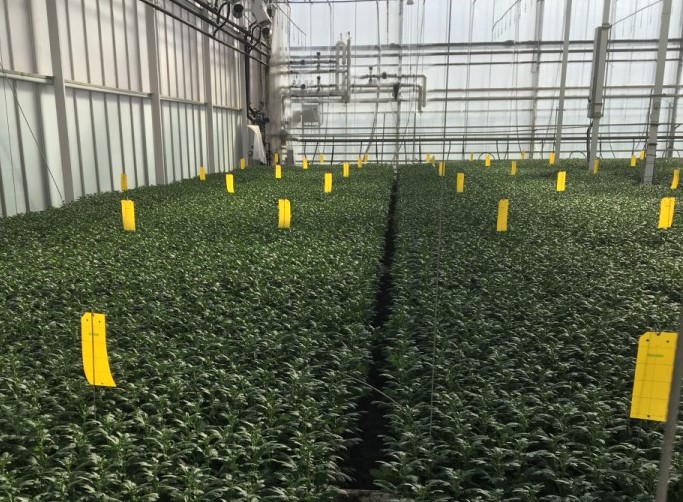
Image © AHDB
Quarantine provisions
Where facilities are available, store incoming plants in a separate glasshouse or isolated area for two to four weeks, monitoring them frequently (twice-weekly). This is important for imported plants or cuttings that may harbour quarantine pests or diseases.
Some pathogens, such as rusts, have a latent period ranging from a few days to a few weeks between infection and symptom development. Recently infected plants may not show any symptoms at delivery.
Similarly, some pests like thrips may be present as eggs in leaf tissue or pupae in growing media and are not initially visible on the plants.
Inspection of imported plant material is important before release into production areas
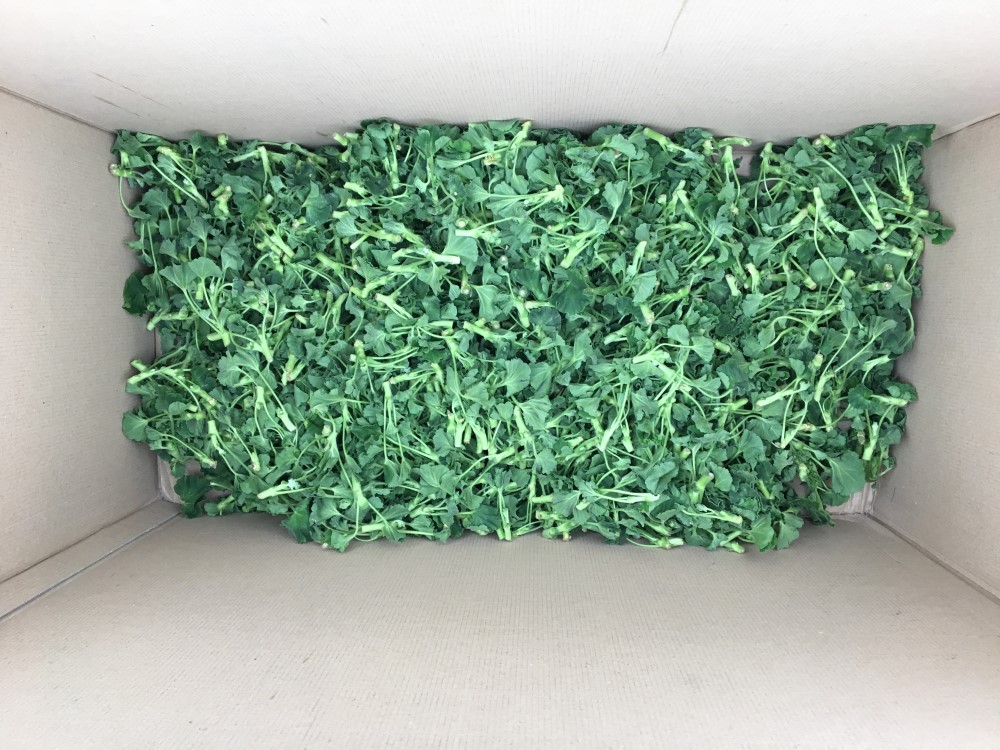
Image © ADAS Horticulture
Minimising pest entry to glasshouses
For very high-value propagation material, insect-proof the glasshouse, installing double doors and mesh over the vents. However, remember that installing mesh over vents can reduce light transmission and air movement.
Monitor crops regularly for insect activity, including using sticky traps and ‘indicator’ plants (those known to be highly attractive or susceptible to certain pests). Long, sticky, yellow roller traps can be useful for mass trapping pests in empty structures or between adjacent crops following a heavy infestation of thrips, whitefly or leaf miner. These traps may be recommended by APHA if a quarantine species is or has recently been present. However, they can also catch flying biological control agents so they should be positioned and managed with care.
Growing media
If any green composted waste material is used, check that it has been adequately treated to minimise the risk of contamination with pathogens, pests or weed seeds (PAS 100:2018 standard).
Store loose growing media in a covered bunker, on a concrete slab above soil level to prevent contamination by run-off water, or in sealed bales or bags. Do not include soil in the growing medium unless it has been heat-treated to kill microorganisms. If growing media is mixed, this should be done on a clean concrete slab, never on the ground. Assign forklift trucks and equipment to specific areas to prevent pathogens, pests or weed seeds on tyres of equipment used elsewhere.
Avoid unnecessary movement of people in the area to prevent the introduction of pathogens, pests or weed seed on shoes. Do not return sweepings of waste growing media into the storage bunker or bag.
Sealed bales of growing media stored in original shrink wrapping on a pallet
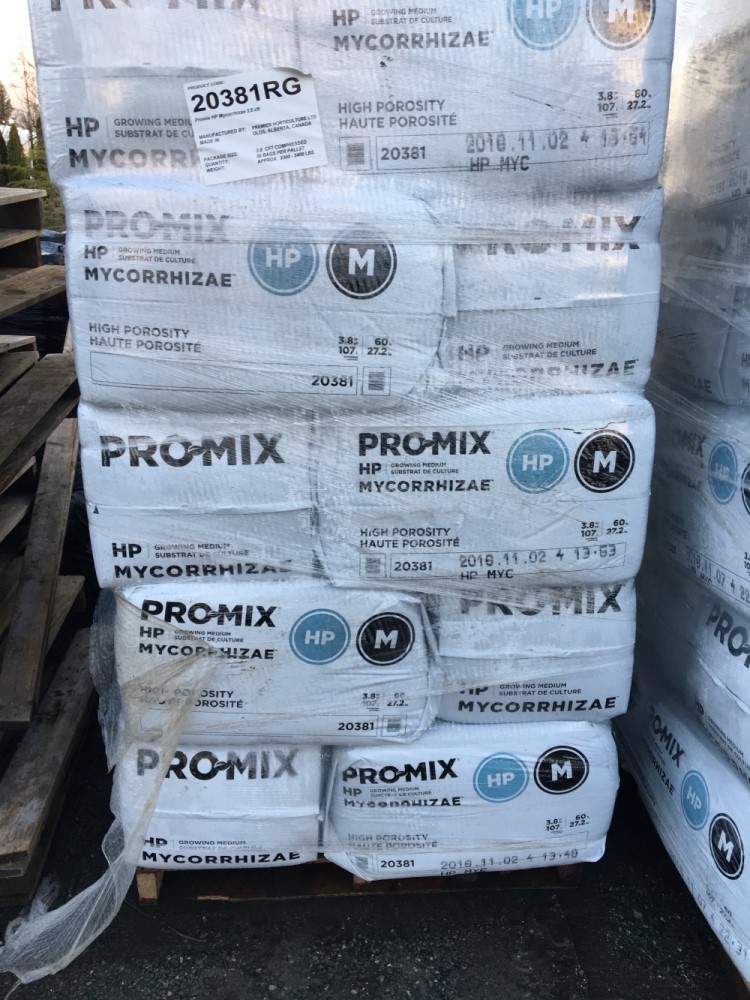
Image © AHDB
Storage and treatment of water
Mains water and borehole water are the most common water supplies in a nursery, and the risk of a plant pathogen being introduced with these is extremely low. However, once stored, water can become contaminated by spores of damaging plant pathogens, especially Pythium, Phytophthora and sometimes Fusarium, which are carried on air currents, on wind-blown dust and with crop debris. Open tanks should be securely covered with a pitched cover that sheds debris and water or a floating cover.
The risk of plant pathogens occurring in water is increased where rainwater is collected from roofs. This is significantly increased where surplus irrigation water (drainage water from beds) is collected for recycling. Where roof water is collected, regularly clean roofs and gutters. Water drawn from rivers or lakes may also contain plant pathogens and requires decontamination.
Dependent on the crop being grown, a few nurseries collect and use roof water and/or surplus used irrigation water without any treatment to control plant pathogens. These nurseries may recognise the risk of root disease but judge the risk to be low for the crops they grow. Alternatively, they rely on routine fungicide programmes to suppress pathogen activity.
However, many growers now treat recycled irrigation water to eliminate pathogens before it is used for irrigating crops, especially if used in propagation or on crops highly susceptible to root pathogens such as Phytophthora. Removal of visible particles must occur before any treatment to eliminate microscopic contaminants.
Various options for water treatment exist, including chemical (chlorination, hydrogen peroxide, ozone, etc.), physical (filtration, settlement tanks, ultraviolet light, etc.) and biological (slow sand filtration, reed beds, etc.).
No single method is suitable for all nurseries, and the advantages and disadvantages of each need to be considered and tailored to individual nurseries.
Useful links
For more information see the following AHDB publications:
Factsheet 06/08 ‘A guide to best practice in handling bought-in plants’
Factsheet 20/08 ‘Wet heat treatment to sterilise pots for reuse’
Factsheet 21/15 ‘Testing water for plant pathogens’
Factsheet 22/15 ‘Methods of water treatment for the elimination of plant pathogens’
Slow sand filtration grower guide
Authors
The content for these web pages were originally authored for AHDB by:
Author(s) – Dave Kaye and Erika Wedgwood. ADAS Horticulture.
Original author(s) – Tim O’Neill, Wayne Brough, John Atwood and Jude Bennison, ADAS.
Webpage content correct as of June 2021.
Got a question? Ask a member of the team:
Cover water storage tanks to keep out dust and debris; pathogen contamination of irrigation water may lead to widespread root disease outbreaks on a nursery
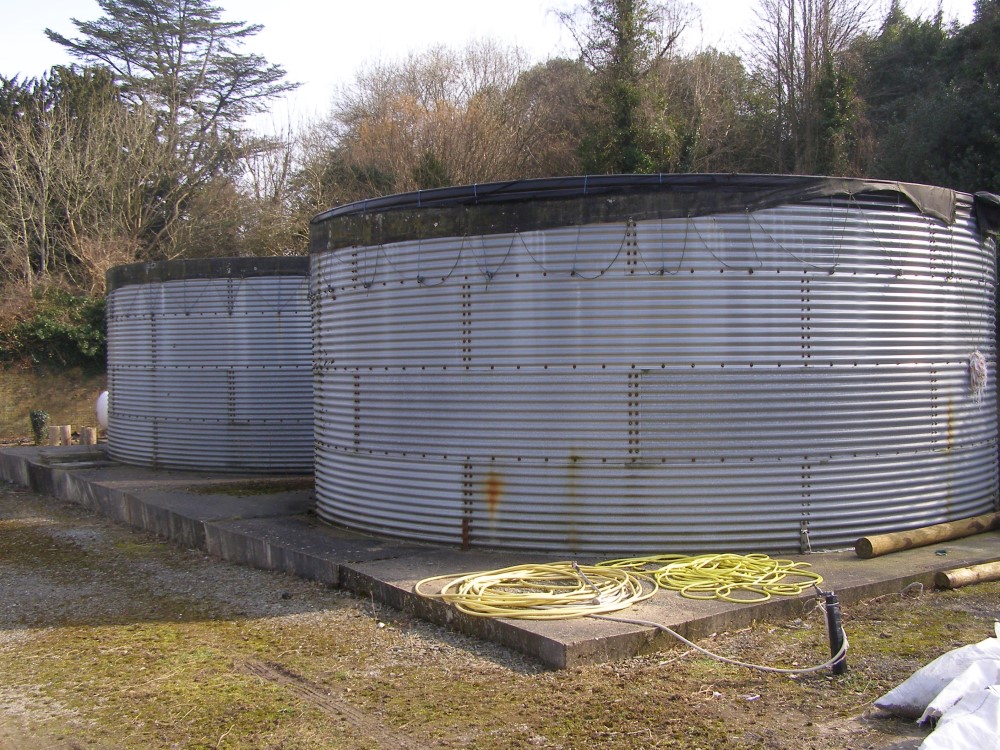
Image © John Adlam (Dove Associates)
Topics:
Sectors:
Tags:

